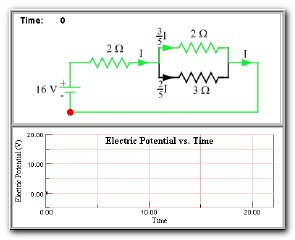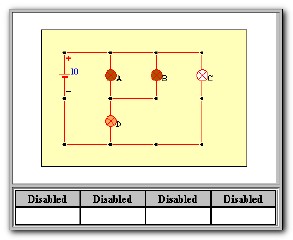Kirchhoff’s Rules

The problem solving gets a little more complicated when looking at more complex circuits like the one above. That’s when it is good to use Kirchhoff’s Rules which apply two conservation laws to analyzing circuits. Take a look at the two rules—then you’ll learn to apply them.
Rule 1: The Junction Rule
At any junction point, the sum of the all the currents entering the junction must equal the sum of all the currents leaving the junction.
Rule 2: The Loop Rule
The sum of the changes in potential around any closed path of a circuit must be zero.
Use the following chart to help you organize your problem solving. It takes a lot of practice so make sure you follow these steps.
| Problem Solving: Kirchhoff’s Rules |
- Label the current in each branch of the circuit with subscripts. Each current represents a different branch between two junctions.
|
- Apply Kirchhoff’s loop rule for one or more loops. For each resistor, apply Ohm’s Law. For each battery determine whether the potential difference is positive (conventional current) or negative (electron flow).
|
- Identify the unknowns. You will need to many different equations—as many equations as there are unknown variables in your diagram. Use Ohm’s Law for each resistor to eliminate some unknown values if possible.
|
- Solve the equations. Solve all the equations you have listed for the unknown values.
|
- Apply Kirchhoff’s junction rule at one or more junctions.
|
|
Next »
More on the Loop Rule
The loop rule is probably the hardest to apply. Use the following illustration to develop a better understanding of Kirchhoff’s Loop Rule.
Click the image below to view the animation.

« Previous | Next »
Circuit Analysis
In this exploration, you will analyze a more complicated circuit using Kirchhoff’s Rules. Use this exploration worksheet to organize your notes.
Click the image below to view the animation.

« Previous
© 2009 KC Distance Learning. All rights reserved.


